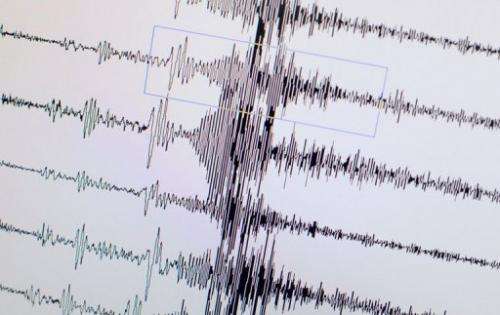Mega-quakes caused volcanoes to sink, research finds

Massive earthquakes can cause distant volcanoes to sink, according to research in Japan and Chile published on Sunday.
The magnitude 9.0 tsunami-generating quake that occurred off northeastern Japan in 2011 caused subsidence of up to 15 centimetres (9.3 inches) in a string of volcanoes on the island of Honshu as much as 200 kilometres (120 miles) from the epicentre, a Japanese study said.
And the 8.8-magnitude Maule quake in Chile in 2010 caused a similar degree of sinking in five volcanic regions located up to 220 km (130 miles) away, according to a US-led paper.
It was not clear whether the phenomenon boosted eruption risk, the authors wrote.
Both the Japan and Chile quakes were of the subduction type, caused when one part of Earth's crust slides beneath another.
If the movement is not smooth, tension can build up over decades or centuries before it is suddenly released, sometimes with catastrophic effect.
In both cases, the sinking occurred in mountain ranges running horizontally to the quake.
The 2011 quake "caused east-west tension in eastern Japan," Youichiro Takada of the Disaster Prevention Research Institute at Kyoto University told AFP in an email.
"Hot and soft rocks beneath the volcanoes, with magma at the centre, were horizontally stretched and vertically flattened. This deformation caused the volcanoes to subside."
The researchers for the Chilean volcanoes said subsidence occurred along a stretch spanning 400 km (250 miles).
As in Japan, the ground deformation in Chile occurred in huge ellipse-shaped divots up to 15 km by 30 km (nine miles by 18 miles) in size, although the cause appears to be different.
Pockets of hot hydrothermal fluids that underpinned the volcanic areas may have escaped through rock that had been stretched and made permeable by the quake.
Two earthquakes in the Chilean subduction zone in 1906 and 1960 were followed by eruptions in the Andean southern volcanic zone within a year of their occurrence.
However, no big eruptions in this volcanic hotspot can be associated with the 2010 temblor, says the study led by Matthew Pritchard of Cornell University in New York.
Takada said the impact of the 2011 quake on volcano risk on Honshu was unclear.
"At this stage we do not know the relation between volcanic eruption and the subsidence we found. Further understanding of the magmatic movement would be necessary," he said.
The subsidence in Japan was spotted at the volcanoes Akitakoma, which last erupted in 1971; Kurikoma (1950); Zao (1940); Azuma (1977); and Nasu (1963).
The studies, published in the journal Nature Geoscience, used data from satellite radar which mapped terrain before and after the quakes.
More information:
dx.doi.org/10.1038/ngeo1857
dx.doi.org/10.1038/ngeo1855
dx.doi.org/10.1038/ngeo1876 (News&Views)
Journal information: Nature Geoscience
© 2013 AFP
















